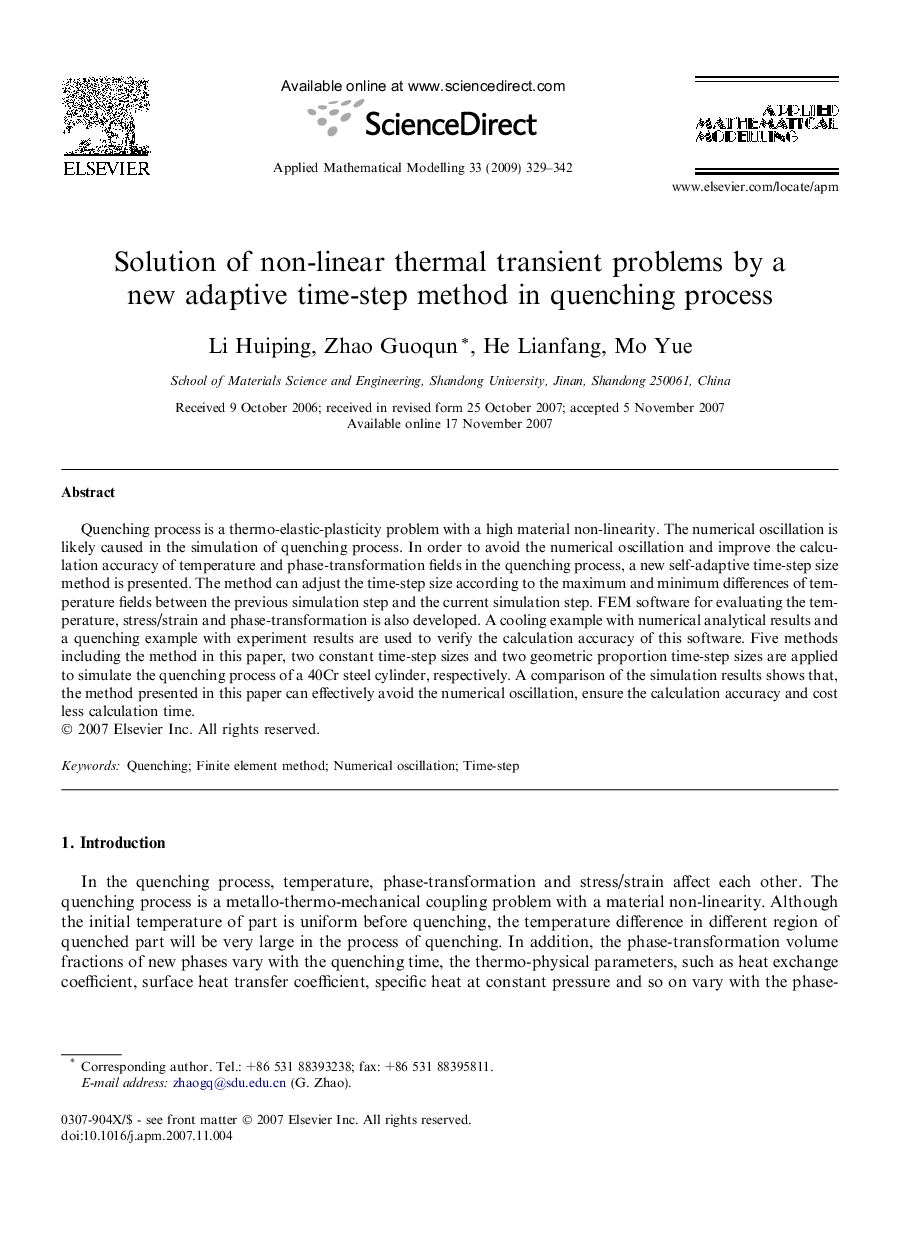| Article ID | Journal | Published Year | Pages | File Type |
|---|---|---|---|---|
| 1706846 | Applied Mathematical Modelling | 2009 | 14 Pages |
Quenching process is a thermo-elastic-plasticity problem with a high material non-linearity. The numerical oscillation is likely caused in the simulation of quenching process. In order to avoid the numerical oscillation and improve the calculation accuracy of temperature and phase-transformation fields in the quenching process, a new self-adaptive time-step size method is presented. The method can adjust the time-step size according to the maximum and minimum differences of temperature fields between the previous simulation step and the current simulation step. FEM software for evaluating the temperature, stress/strain and phase-transformation is also developed. A cooling example with numerical analytical results and a quenching example with experiment results are used to verify the calculation accuracy of this software. Five methods including the method in this paper, two constant time-step sizes and two geometric proportion time-step sizes are applied to simulate the quenching process of a 40Cr steel cylinder, respectively. A comparison of the simulation results shows that, the method presented in this paper can effectively avoid the numerical oscillation, ensure the calculation accuracy and cost less calculation time.
